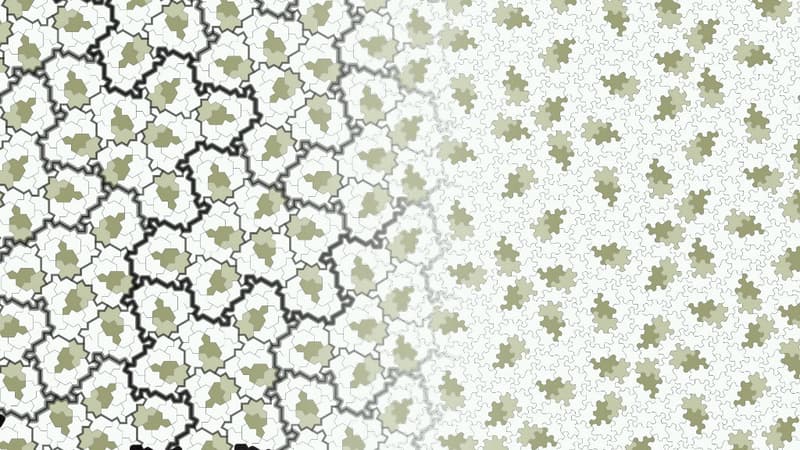It’s a recurring motif in the history of science: the most impressive discoveries can come in the most unexpected ways. A tradition confirmed recently when a peaceful 64-year-old retiree solved a 60-year-old mathematical problem, which some of the greatest specialists considered unsolvable.
The favorite hobby of David Smith, a 64-year-old Briton: looking for “amazing” geometric patterns. And in November 2022, he just created the “hat,” a 13-sided shape that has since solved a decades-old math problem.
This problem is the Einstein problem, which has nothing to do with the famous physicist, but with the German word for “a stone” (“ein stein”). At the heart of this problem is a question: is there a geometric shape that can be repeated ad infinitum without drawing a general repeating pattern?
The hat is the first shape ever created to meet these criteria (an “aperiodic monotile,” in academic parlance). Since then, the Brit has done even better with the “spectrum”, because the hat had a small flaw, in that he had to turn it over once every seven moves to avoid the appearance of a repeating pattern. With the “spectrum”, no more problem: a study to be published shows that it is a pure “einstein”.
An “almost ridiculous, but wonderful” story
The specialists are unanimous. “A funny, almost ridiculous, but wonderful story” for Craig Kaplan, a professor of computer science at the Canadian University of Waterloo who helped David Smith validate his discovery. An “exciting, surprising and astonishing” discovery for Marjorie Senechal, a mathematician at Smith College (Massachusetts), who believes it should “lead to a deeper understanding of order in nature and the nature of order.”
Even the mathematician and 2020 Nobel Prize in Physics Roger Penrose, a specialist in aperiodic tiles, doubted that such a feat was possible, recalls Doris Schattschneider, a mathematician at the University of Moravia (Pennsylvania). The University of Oxford will organize an event in July to celebrate this discovery, the Hatfest (“hat party”).
Meanwhile, other enthusiastic hobbyists have already adopted the shape for printing on T-shirts or creating cookies. This discovery is all the more amazing because “the answer fell from the sky and from the hands of an amateur,” Craig Kaplan stresses. “And in the most beautiful way, thanks to a lover of the subject, who explores it outside of any professional objective.”
Source: BFM TV


